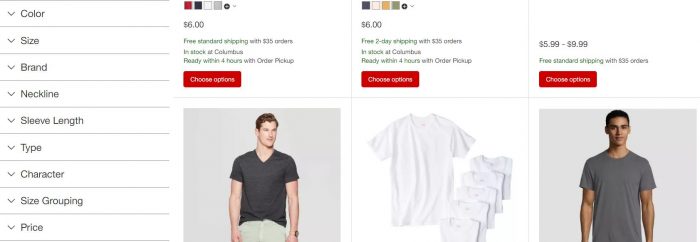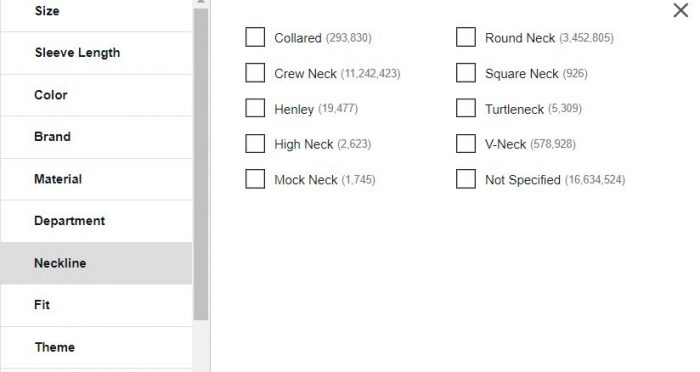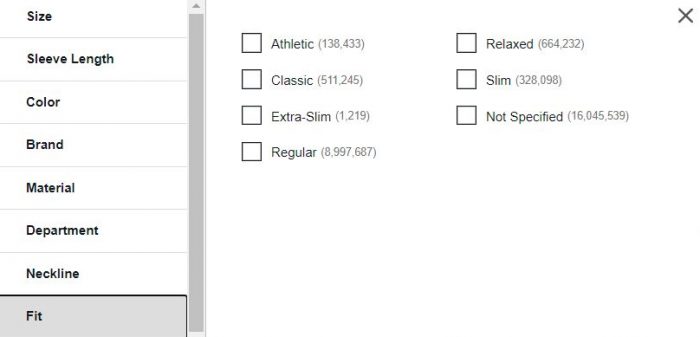Product tags – be seen or be gone

If attribute tagging is so important, why do most sellers neglect to tag their products? After all, tagging not only “saves” the product from being lost, but also increases its exposure by displaying it in narrow searches.
The most important thing to take care of when selling a product is for the potential buyers to be able to actually find it when they shop, doesn't matter if it’s on an ecommerce marketplace like ebay or real world stores like walmart. I know it might seem obvious, but the fact is that in many ecommerce marketplaces a large chunk of products sellers upload doesn’t show up in searches. Instead, they get buried deep inside the website, never to be seen by the buyers. In this article we will explore this problem, and see how we can save our products from being lost and make sure they come up in every search.
When sellers upload a new product to an ecommerce marketplace, they provide the platform a product description, which they believe accurately depicts the product. More importantly, the sellers are also given the option to tag the product with relevant tags. Tags are actually the different attributes of the product (such as color, size, fit and so on), so tagging products help the marketplace display them in more specific searches. If we take T-shirts as an example, most sellers will describe and tag the product’s color, size and brand (when relevant), which most people will agree are the most important attributes to look for when buying a T-shirt. This is where the problem begins.
Although color, size and brand are indeed very important, ecommerce marketplaces usually offer much more attributes than just these three. Following the T-shirt example, we can see that ebay also allows tagging for sleeve length, material, neckline, fit, and much more, while Target allows tagging for patterns and special features.

Since many sellers usually only tag the attributes they think are most important, this leads the platform to automatically tag the product as “Not Specified” or “Other” for the attributes the seller did not tag. This is what every seller should fear, because this basically means buyers will not see the product in their searches.

We can easily see how big of a problem this is if we look at the number of unspecified products. Still with the T-shirt example, ebay shows more than 44 million results for the search “t shirt”. But looking into the “neckline” attribute, we see that more than 17.6 million products are not tagged under this attribute. Instead, these unspecified products are automatically tagged as “Not Specified”. Similarly shocking, we also see that 18 million products are tagged as “Not Specified” under the rather important “fit” attribute. This means that more than 40% of all products in the t-shirt category will “disappear” when searching by these attributes. Let's face it, if buyers are given the option to narrow their search with these attributes - they will do it and they will never filter by “Not Specified” or “Other”.
Because the “Not Specified” and “Other” tags are essentially useless, recent trends in online marketplaces show that these automatic tags are removed altogether. And so, many products are lost on the website, never to be seen by potential buyers. This is the best evidence for the importance of tagging - it can literally “save” your products.

If attribute tagging is so important, why do most sellers neglect to tag their products? After all, tagging not only “saves” the product from being lost, but also increases its exposure by displaying it in narrow searches. The most common reason is that most sellers are not even aware of this huge problem. As mentioned above, sellers usually tag only the most important attributes they can think of, while leaving many more untagged, not knowing that this would take out their products from most searches. But even if most sellers would have understood the importance of tagging, in order to fully tag a product the seller must know all the product’s relevant taggable attributes. If a seller doesn’t know that a T-shirt may be tagged according to its neckline attribute, he will simply not tag it.

Which brings us to the second reason for why sellers don’t fully tag their products: the process of tagging is often a complex and exhausting one, and requires the sellers to have a strong command of the tagging procedures. While differing from one marketplace to another, tagging procedures include the use of a set of codes unique to each marketplace, which represent specific attributes and their values. So in addition to actually knowing which attribute tags are relevant to their product, the seller must also learn all the tag codes and the codes of the different values within each tag. For example, while tagging procedures that allow the seller to tag products using words (such as “Attribute: Neckline|V-Neck”) are simple enough, in many other marketplaces, tagging may look like this: Attribute: 27721|45. If this seems complicated, just remember that you have to tag EACH PRODUCT separately according to its own attributes, a painstaking process which takes a very long time. And then, if you want to sell your products in a different marketplace, of course you have to learn a totally different tagging procedure and a new set of codes! If fully and correctly tagging your products sounds almost impossible to do, it’s because it is. So there is no wonder why most sellers don’t do it - it’s because they actually can’t.
We have seen the huge problem caused by not fully tagging your products - up to 40% of untagged products “disappear” from searches, either stuffed into the “Not Specified” or “Other” trash bin, or removed from searches altogether (which says a whole lot about the importance of tagging products fully and correctly). We have also seen why it’s nearly impossible for sellers to fully tag their products - the process of tagging is very complex and time-consuming, requiring sellers to have a very deep familiarity with each marketplace’s unique tagging procedures.
So, if attribute tagging is so important, and yet almost impossible to do correctly, how do we bridge this gap? To combat this huge problem, and to help “save” sellers’ products from being swallowed into the platform by increasing their exposure, Lisuto is offering a range of solutions to sellers, marketplaces and distributors. Lisuto uses sophisticated AI technology to automatically extract relevant data from texts and images, and use it to tag products. Instead of memorizing hundreds of tag codes, you just take a photo of the product or describe it in text, and Lisuto will do the rest - fully and correctly tag all of your products within minutes, which, of course, will help you achieve maximum exposure in the marketplace, will drive buyers traffic and will significantly increase your conversion rate.



